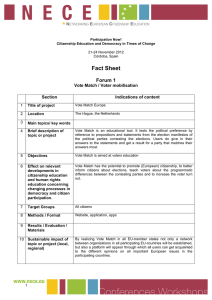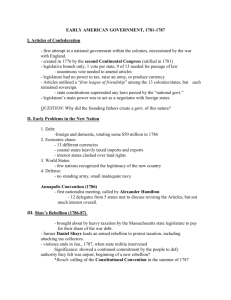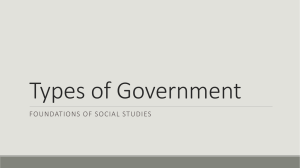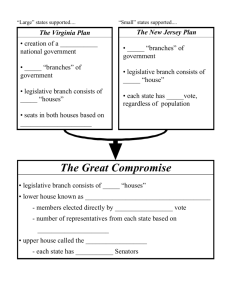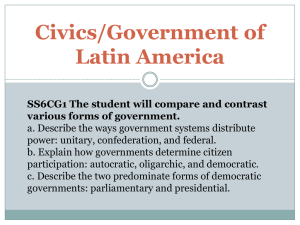The Revolution and Constitution
advertisement
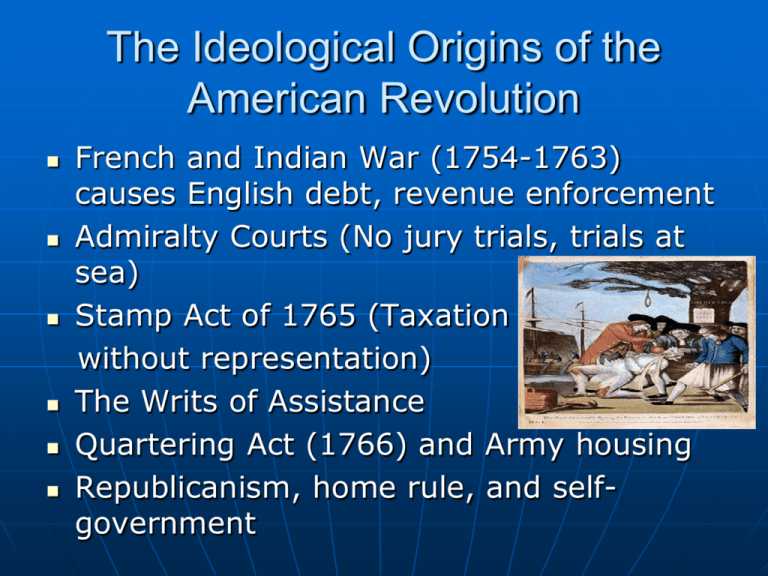
The Ideological Origins of the American Revolution French and Indian War (1754-1763) causes English debt, revenue enforcement Admiralty Courts (No jury trials, trials at sea) Stamp Act of 1765 (Taxation without representation) The Writs of Assistance Quartering Act (1766) and Army housing Republicanism, home rule, and selfgovernment The Articles of Confederation (1781-1787) Negative government, fear of centralized power Unicameralism (single chamber) Each state has one vote Two-thirds vote to pass law Unanimous vote to amend Articles No tax power, Executive branch, judiciary No navy, power to sign foreign treaties Large national debt, fear of foreign intervention Toward the Constitution of 1787 Shay’s Rebellion (1786) The Annapolis Convention (1786) The Philadelphia Convention (1787) 55 delegates in closed sessions The Virginia and New Jersey Plans The Connecticut Compromise (Representation) The Three-Fifths Compromise (slavery) Import taxes Interstate commerce regulation Representative democracy The amendment process (living document) An Ideological Party System Develops Federalists (Loose interpretation, national power, fear of democracy) The Anti-Federalists (Strict construction, states rights doctrines, need for a bill of rights) Limitations on Government Power Federalism Separation of powers and Judicial Review Bicameralism Republican form of government Reserved powers (9th and 10th amendments) The Ratification Struggle Submitted to state conventions for approval Three fourths of states necessary for approval The Federalist Papers



